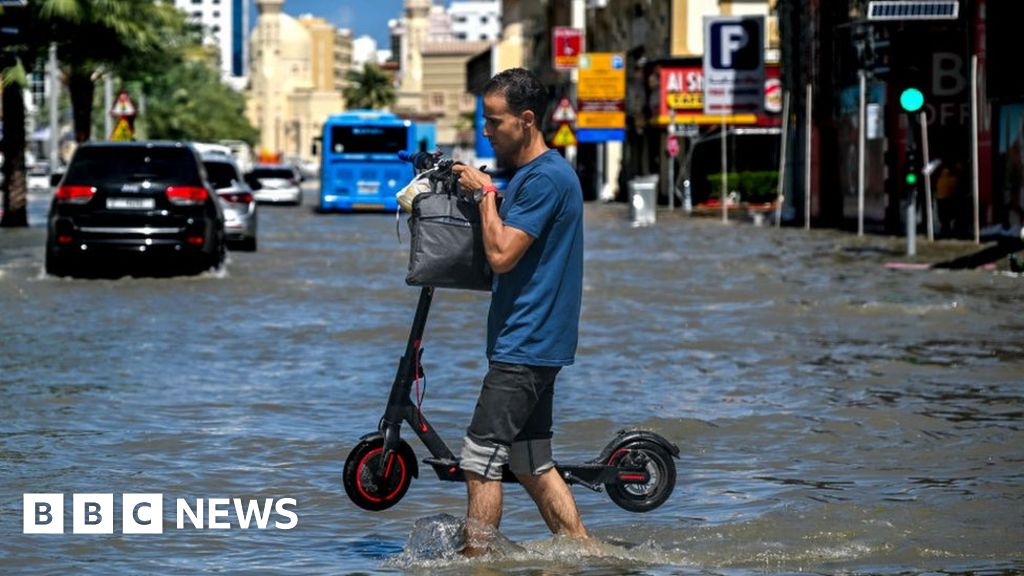- cross-posted to:
- collapse@slrpnk.net
- cross-posted to:
- collapse@slrpnk.net
This article isn’t perfectly scientifically accurate but it’s better than most! For those interested, here’s a better (detailed) explanation of the science:
Cloud seeding works best in supercooled liquid clouds, which start with barely any ice in. For ice to form in clouds, you need INP (ice nucleating particles), aerosols such as sea salt, or dust, for the ice to grow onto. INP can be pretty rare, depending on where you are in the world.
By adding silver iodide (an efficient INP) ice crystals can form. This means the cloud has both ice and liquid water in (a “mixed phase” cloud).
For multiple reasons, ice grows better and faster than liquid cloud droplets (the “Wegener Bergeron Findeisen effect” for one). Because there’s only so much water in the cloud, these ice crystals then grow at the expense of water droplets in the air, allowing for big snowflakes to grow, but droplets evaporate.
This turns it from a cloud with many tiny droplets, into one with big heavy snowflakes, which fall out of the cloud. Before the snowflakes reach the ground, they melt, turning into rain.
TLDR; cloud seeding takes the water already in the cloud, and makes it precipitate slightly more efficiently, but only if you improve the balance of aerosols in the air just right
Why use silver iodide instead of sea salt like what typically happens naturally? Silver iodide sounds expensive to manufacture compared to sea salt.
good question!! I actually might have been mistaken by saying sea salt was an INP (whoops).
Sea salt is a great condensation nuclei (CCN). CCN allow cloud droplets to form instead of ice crystals.
For cloud seeding to work well, it’s better to seed with INP instead of CCN because if you encourage lots of droplets to form, all you get is a bunch of really tiny droplets, making a really bright white cloud (no rain!). (Side note: that’s why rain clouds look dark: they’re made of fewer really big droplets.)
Adding sea salt to clouds is a thing though! It’s been proposed as Marine Cloud Brightening - adding lots of sea salt to the air over the ocean, making the earth more reflective to combat further global warming.
As far as I know, most inorganic salts are good INP or CCN, but have varying efficiencies. Sea salt dissolves in liquid water whereas silver iodide doesn’t, and silver iodide has the right sort of hexagonal crystal lattice for ice to start sticking to. So silver iodide is a great INP whereas sea salt is a great CCN.
Even longer (and reasonably silly) explanation here: https://www.acsh.org/news/2022/09/01/why-are-clouds-seeded-silver-does-it-work-16538
This is the best summary I could come up with:
Put simply: warmer air can hold more moisture - about 7% extra for every degree Celsius - which can in turn increase the intensity of rain.
In the hours that followed the floods, some social media users were quick to wrongly attribute the extreme weather solely to recent cloud seeding operations in the country.
Earlier reports by Bloomberg suggested cloud seeding planes were deployed on Sunday and Monday, but not on Tuesday, when the flooding occurred.
“Ahead of the event, computer models (that don’t factor in potential cloud seeding effects) were already predicting well over a year’s worth of rain to fall in around 24 hours,” he said.
Cloud seeding missions in Emirati territory are run by the National Center of Meteorology (NCM), a government task force.
Preventing heavy rainfall turning into deadly floods requires robust defences to deal with sudden intense downfalls.
The original article contains 824 words, the summary contains 143 words. Saved 83%. I’m a bot and I’m open source!




